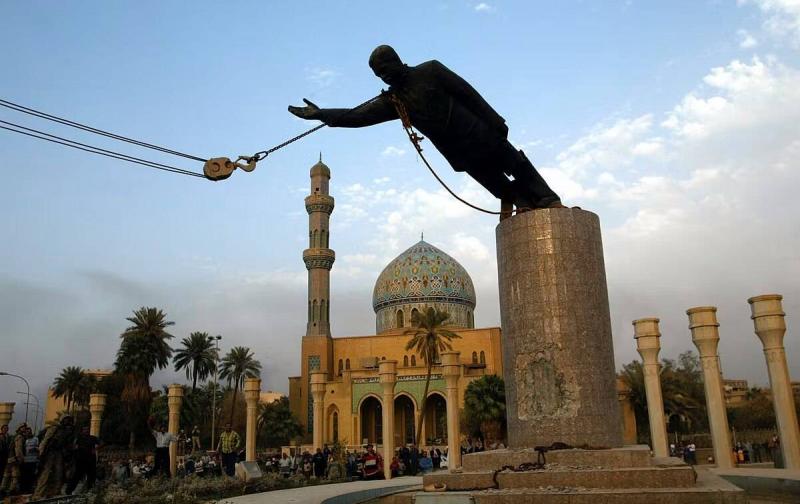On this day, 21 years ago, Iraqis recall the scenes of U.S. forces entering the heart of Baghdad on April 9, 2003, following nearly three weeks of intense bombing and unequal battles, which initiated a spiral of chaos, looting, and destruction. The U.S. Congress authorized the use of military force against Iraq in 2002, claiming that Baghdad possessed weapons of mass destruction that threatened global peace. In March 2003, the United States launched a war on Iraq, bombing Baghdad with aircraft and naval ships, causing death, devastation, and destruction to its residents and landmarks.
How did Saddam Hussein's regime fall in Iraq? The U.S. ultimatum demanding Saddam Hussein’s departure expired on March 20, 2003, but calm still prevailed in Baghdad. Ten thousand kilometers away in the White House, George W. Bush announced the commencement of operations against Saddam Hussein, and a barrage of cruise missiles struck one of Baghdad's neighborhoods. At 5:35 AM, the war began, dubbed “Operation Iraqi Freedom” by the Americans. Approximately 150,000 American soldiers and 40,000 British soldiers were deployed in Iraq to initiate military operations, sparking numerous protests in various Arab and global capitals. Three weeks were sufficient to determine the fate of the regime and seize control of Baghdad by April 9. The preemptive war was justified by the existence of nuclear and chemical weapons on Iraqi territory, but ultimately, these weapons were never found.
On April 9, Americans entered Baghdad and toppled the statue of then-Iraqi President Saddam Hussein, symbolizing the fall of the Iraqi capital and the ruling regime. Britain, Australia, and Poland participated in the invasion, supported by Spain, Italy, and several Eastern European countries. Many still remember the images of Saddam Hussein’s statue being toppled in Firdos Square as U.S. forces entered in 2003, marking the beginning of a new era in Iraq's history.
The fall of Saddam Hussein was part of a plan to change the political map of the Middle East, later completed by what became known as the Arab Spring events that led to the ousting of many Arab leaders who had ruled over their peoples for decades. Just as Iraqis were starting to breathe a sigh of relief after the end of the sanctions that had burdened them and resulted in the migration of hundreds of thousands to neighboring countries and the West in search of a better life, sectarian killings and systemic violence began to emerge, condemning Iraqis to death.
Sectarian violence in Iraq peaked in 2006 and 2007 before subsiding in 2009, but the outbreak of the crisis in neighboring Syria and the shift of protests in some Syrian cities to sectarian violence had significant repercussions on the resurgence of sectarianism in the land of the Tigris and Euphrates.
Despite the different names assigned to April 9, with some calling it the day of "The Fall of Baghdad" or "The Occupation of Iraq," while others referred to it as "Liberation Day," April 9, 2003, remains etched in the minds of Iraqis and the broader Arab region.
In 2011, U.S. forces withdrew from Iraq without finding weapons of mass destruction, leaving behind a heap of deteriorating social, political, economic, and security conditions. The anniversary of Saddam Hussein's fall coincides with the anniversary of the execution of Mr. Muhammad Baqir Al-Sadr and his sister Amina Al-Sadr "Bint Al-Huda" on April 9, 1980, accused of opposing the ruling Ba'ath Party at the time.
Imam Muhammad Baqir Al-Sadr was a religious reference, born in 1935 in the holy city of Kadhimayn from the prominent scientific and religious Al-Sadr family. He is the uncle of the Sadrist movement leader, Mr. Muqtada Al-Sadr, and the father of Jaafar Al-Sadr. Mr. martyr Muhammad Baqir Al-Sadr represents an important phase and clear witness to a historical journey for Iraq that witnessed significant, broad, and critical changes.




